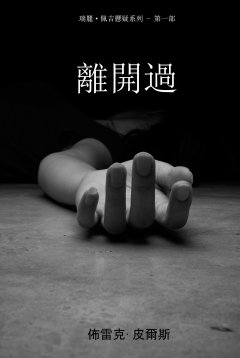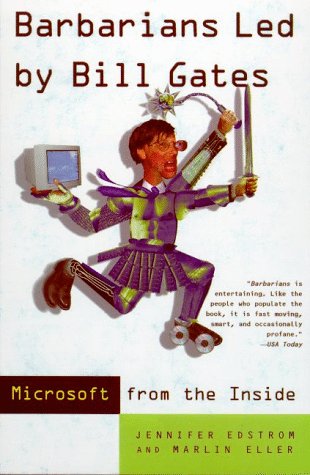- 2 402 202 книги
- Поиск
libcats.org











Beauty Imagined: A History of the Global Beauty Business
Geoffrey JonesThe global beauty business permeates our lives, influencing how we perceive ourselves and what it is to be beautiful. The brands and firms which have shaped this industry, such as Avon, Coty, Est?e Lauder, L'Or?al, and Shiseido, have imagined beauty for us.
This book provides the first authoritative history of the global beauty industry from its emergence in the nineteenth century to the present day, exploring how today's global giants grew. It shows how successive generations of entrepreneurs built brands which shaped perceptions of beauty, and the business organizations needed to market them. They democratized access to beauty products, once the privilege of elites, but they also defined the gender and ethnic borders of beauty, and its association with a handful of cities, notably Paris and later New York. The result was a homogenization of beauty ideals throughout the world.
Today globalization is changing the beauty industry again; its impact can be seen in a range of competing strategies. Global brands have swept into China, Russia, and India, but at the same time, these brands are having to respond to a far greater diversity of cultures and lifestyles as new markets are opened up worldwide.
In the twenty first century, beauty is again being re-imagined anew.
Fast facts from the book:
- Eug?ne Schueller, the founder of the world's biggest beauty company L'Or?al, invented the world's first safe synthetic hair dye after numerous experiments in his own kitchen, with the police being regularly called because of explosions.
- Fran?ois Coty, one of France's greatest beauty entrepreneurs, got his perfume business started by smashing one of his bottles on the floor of a leading Parisian department store in a successful gambit to get customers to smell it.
- Upon arrival to the U.S. in 1904, the Polish-born makeup artist Max Faktorowicz took the name given to him at Ellis Island: Max Factor.
- The Communist regime of Mao Zedong banned the use of cosmetics in the 1970s, and visitors to China struggled to tell men from women. Today China is the world's fourth largest beauty market, with most leading Western brands sold as skin lighteners.
- Anita Roddick established the first Body Shop in Brighton, England, to finance her husband's ambition to spend two years riding on horseback from Buenos Aires to New York City.
- Perfume was drunk as a health drink right up to the nineteenth century, and men were as likely as women to use cosmetics.
- By 1948, 90 percent of American women used lipstick and two-thirds used rouge.
This book provides the first authoritative history of the global beauty industry from its emergence in the nineteenth century to the present day, exploring how today's global giants grew. It shows how successive generations of entrepreneurs built brands which shaped perceptions of beauty, and the business organizations needed to market them. They democratized access to beauty products, once the privilege of elites, but they also defined the gender and ethnic borders of beauty, and its association with a handful of cities, notably Paris and later New York. The result was a homogenization of beauty ideals throughout the world.
Today globalization is changing the beauty industry again; its impact can be seen in a range of competing strategies. Global brands have swept into China, Russia, and India, but at the same time, these brands are having to respond to a far greater diversity of cultures and lifestyles as new markets are opened up worldwide.
In the twenty first century, beauty is again being re-imagined anew.
Fast facts from the book:
- Eug?ne Schueller, the founder of the world's biggest beauty company L'Or?al, invented the world's first safe synthetic hair dye after numerous experiments in his own kitchen, with the police being regularly called because of explosions.
- Fran?ois Coty, one of France's greatest beauty entrepreneurs, got his perfume business started by smashing one of his bottles on the floor of a leading Parisian department store in a successful gambit to get customers to smell it.
- Upon arrival to the U.S. in 1904, the Polish-born makeup artist Max Faktorowicz took the name given to him at Ellis Island: Max Factor.
- The Communist regime of Mao Zedong banned the use of cosmetics in the 1970s, and visitors to China struggled to tell men from women. Today China is the world's fourth largest beauty market, with most leading Western brands sold as skin lighteners.
- Anita Roddick established the first Body Shop in Brighton, England, to finance her husband's ambition to spend two years riding on horseback from Buenos Aires to New York City.
- Perfume was drunk as a health drink right up to the nineteenth century, and men were as likely as women to use cosmetics.
- By 1948, 90 percent of American women used lipstick and two-thirds used rouge.
Скачать книгу бесплатно (pdf, 5.59 Mb)
Читать «Beauty Imagined: A History of the Global Beauty Business»
Читать «Beauty Imagined: A History of the Global Beauty Business»
EPUB | FB2 | MOBI | TXT | RTF
* Конвертация файла может нарушить форматирование оригинала. По-возможности скачивайте файл в оригинальном формате.
Популярные книги за неделю:

Проектирование и строительство. Дом, квартира, сад
Автор: Петер Нойферт, Автор: Людвиг Нефф
Размер книги: 20.83 Mb

Система упражнений по развитию способностей человека (Практическое пособие)
Автор: Петров Аркадий НаумовичКатегория: Путь к себе
Размер книги: 818 Kb

Сотворение мира (3-х томник)
Автор: Петров Аркадий НаумовичКатегория: Путь к себе
Размер книги: 817 Kb

Радиолюбительские схемы на ИС типа 555
Автор: Трейстер Р.Категория: Электротехника и связь
Размер книги: 13.64 Mb
Только что пользователи скачали эти книги:

Pierce, Tamora - Circle Of Magic 04 - Briar's Book - image007
Автор: Pierce Tamora
Размер книги: 41 Kb

Застрахователният синдикат на Ъкридж
Автор: Удхаус П. Г.Категория: Классическая проза
Размер книги: 72 Kb

Encyclopedia of Spectroscopy and Spectrometry
Автор: Lindon J.C., Автор: Tranter G.E., Автор: Holmes J.L. (eds)Категория: Chemistry, Phys. Methods of Analysis
Размер книги: 61.92 Mb

Fundamentals of Engineering Thermodynamics (Solutions Manual)
Автор: Michael J. Moran, Автор: Howard N. Shapiro
Размер книги: 69.97 Mb

Barbarians Led by Bill Gates: Microsoft From The Inside: How The World's Richest Corporation Wields Its Power
Автор: Jennifer Edstrom, Автор: Marlin EllerКатегория: eLearning_book, languages
Размер книги: 1.08 Mb

Теория автоматического управления для чайников
Автор: Поляков К.Ю.Категория: M_Mathematics, MOc_Optimization and control
Размер книги: 987 Kb

Great Jobs for Music Majors
Автор: Jan Goldberg, Автор: Stephen E. Lambert, Автор: Julie Degalan
Размер книги: 838 Kb





